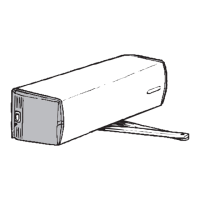EXTERNALCONNEcnONS
1)
Sequencing
To program operators to function together, namely the correct closing
sequence for pair doors, sequential opening or interlock, The
operators are connected to a current loop (connectors
1
and 2)
The jumpers on the control unit will determine the master operator.
Only one operator can be master,
2)
Outside impulse inhibit
Prevents the door opening on outside impulse, if connector 3 is
grounded. On battery operation the state of mains is in connector 3,
3)
Locking circuit
Prevents the door opening if the circuit is open and door fully closed,
For example use a locking circuit micro switched keep such as the
ABLOY 8400.
O
Note! Use always use a locking circuit when there is a lock fitted
, . to
the door,
4)
Outside impulse
The door opens immediately on a impulse, The contacts of a impulse
device must be potentialily free and have a normally open function.
5)
Inside impulse
The door opens after preset delay (0 ...
15
sec)
6)
Safety sensor
The sensor's output must be voltage-free and closing. The safety circuit has
a c1osed-circuit control. Connect the 1000 ohm resistance on the block
terminal to the safety sensor as shown in the schematic on page 19. The
total resistance of the safety sensor wiring must not exceed
100 ohm, when the switch is closed. The safety sensor will stop a door which
is about to open if an obstacle is detected in the sensor range. The safety
operation zone; refer control point 27. .
7)
Lock control relay
Contacts ratings: Max power 0,8A/30V resistive.
0,3A/30V inductive
The relay reacts to an opening impulse. The relay hold time
adjustment refer to control point 22,
8)
12
&
24V DC outputs
The control unit provides
12
and
24
V regulated output,
Max current: 24 V DC 0.8 A or
12V DC 0,5 A
21
1 __ -

